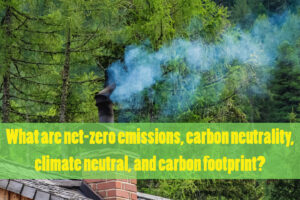
On 8th October 2018, the Intergovernmental Panel on Climate Change (IPCC) released a special report on climate limiting global warming to 1.5°C above pre-industrial levels. The report was entitled “Special Report on Global Warming of 1.5ºC” and was approved by the IPCC on Saturday (October 6, 2018) in Incheon, Republic of Korea.
The limit is 0.5°C lower than the maximum level of global warming set in the Paris Agreement. In December 2015, representatives from 195 countries attended the 21st Conference of the Parties to the UNFCCC hosted in Paris and come to an Agreement aiming to strengthen the global response to the threat of climate change. The Paris Agreement limited global warming to 2.0°C above preindustrial levels and suggested to pursue efforts to limit the temperature increase to 1.5°C above pre-industrial levels.
As part of the decision to adopt the Paris Agreement, the IPCC was invited and accepted the invitation to assess the impacts of global warming of 1.5°C above pre-industrial levels, and the report was released this month as scheduled. In the report, the IPCC presents robust differences in the impacts and consequences between global warming of 1.5°C and 2.0°C above pre-industrial levels, and highlights a number of climate change impacts that could be avoided by limiting global warming to 1.5°C compared to 2.0°C above pre-industrial levels.
The IPCC report informs that evidence indicates that human-induced global warming has reached approximately 1°C above pre-industrial levels by 2017, with a rate of increase at 0.2°C per decade, and that global warming is likely to reach 1.5°C above pre-industrial levels before 2050 if it continues to increase at the current rate.
The IPCC report further informs that temperature increase higher than the global average has already been experienced in many regions and seasons, and that 20-40% of the global human population have already experienced warming of more than 1.5°C above pre-industrial levels in at least one season. The consequences of 1°C of global warming, such as extreme weather, rising sea levels, and diminishing Arctic sea ice, have been witnessed very often in recent years.
Notably, we are currently facing a climate emergency. Unprecedented climate changes need for 1.5°C global warming limit rather than 2.0°C limit. Limiting global warming to 1.5°C above pre-industrial levels would give people and ecosystems more room to adapt and remain below relevant risk thresholds, scientists of IPCC Working Groups stated.
To limit global warming to 1.5°C above pre-industrial levels and achieve sustainable development, ambitious mitigation actions are indispensable. As documented in the IPCC report, limiting global warming to 1.5°C would require rapid and far-reaching changes in energy, land, urban and infrastructure (including transport and buildings), and industrial systems. These system transitions are unprecedented in terms of scale, but not necessarily in terms of speed, and imply deep emissions reductions in all sectors or in all aspects of society. A number of strategies and steps have been outlined in the IPCC report. Some of the kinds of actions may be already underway around the world. They may need to accelerate. Most importantly, citizen participation is needed for all of us.
Differences in Potential Impacts and Associated Risks Between Limiting Global Warming to 1.5°C and 2.0°C
Compared to 2°C, limiting global warming to 1.5°C is projected to:
- result in lower mean temperature in most land and ocean regions, fewer hot extremes in most inhabited regions, less frequency of heavy precipitation, precipitation deficits or drought in some regions.
- result in sea level rise with around 0.1 meter lower by 2100, which enables greater opportunities for adaptation in the human and ecological systems of small islands and low-lying coastal areas.
- reduce the impacts on terrestrial, freshwater, coastal ecosystems and biodiversity to higher extent, and retain more of their functions and services to humans.
- reduce the levels of increases in ocean temperature as well as associated increases in ocean acidity, and reduce risks to marine biodiversity, fisheries, and ecosystems.
- increase to lower extent climate-related risks to health, livelihoods, food security, water supply, human security, and economic growth.
- require less adaptation needs and adaptive capacity for some human and natural systems, with lower associated losses.
- reduce global net anthropogenic CO2 emissions about 45% from 2010 levels by 2030 and reach net zero around 2050. Otherwise, CO2 emissions are projected to decline by about 20% by 2030 and reach net zero around 2075 for limiting global warming to 2°C.





Leave a Reply